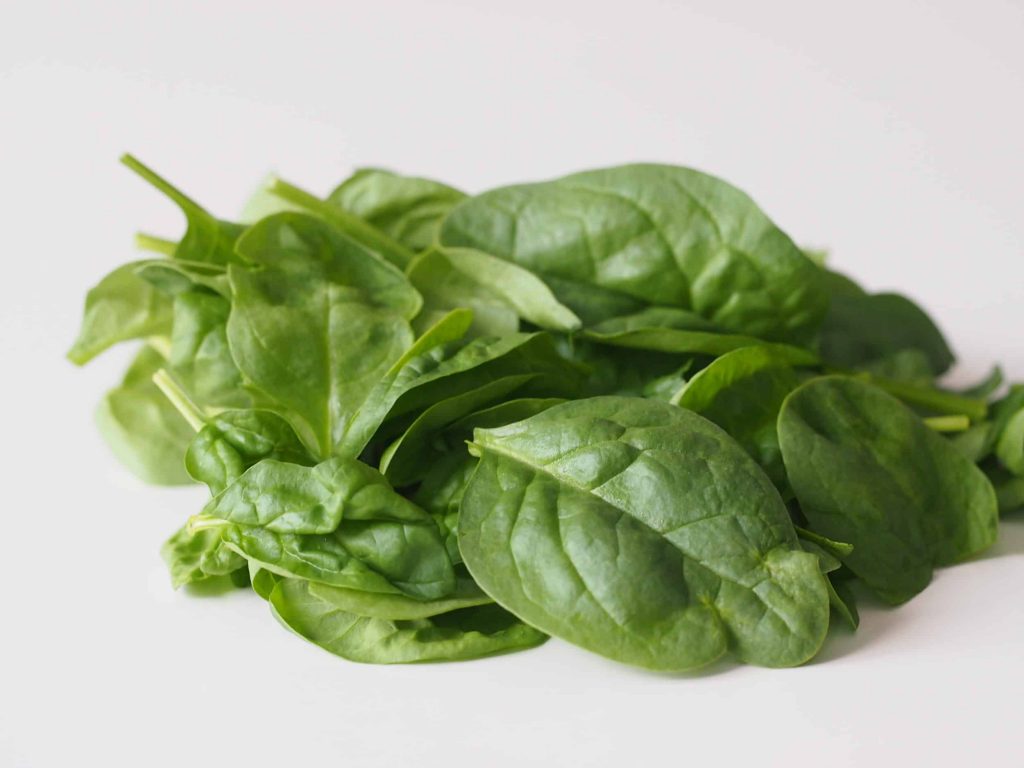When the infant is ready, which is often around 6 months old, spinach can be administered. There are diverse kinds of spinach, which today may be divided into two main categories: flat-leaf spinach, which has smooth leaves that might be round, oval, or heart-shaped, and savoy spinach, which has crinkly, curly leaves. Spinach first appeared in West Asia. There are other types of nutritious leafy greens that are served as food in a similar manner and are frequently referred to as “spinach” in English.
These leafy greens include different types of amaranth like efo tete, a plant native to Nigeria, and morogo, a plant native to Kenya, as well as the robust vine leaf known as pui, a plant native to India, the mustard-green komatsuna, a plant native to Japan, the water plant kangkong, a plant native to the Philippines, and the curly groundcover sambu, a plant native to Brazil.
Is Spinach Good For Infants?
Yes, but it is not the superfood that is high in iron, as originally touted by advertisers.
- Fresh spinach does contain some iron, but it’s not as much as was formerly believed, and the leafy green’s oxalates can make it harder for the body to assimilate the iron and other nutrients. More iron is absorbed by the body when spinach is cooked and consumed with foods high in vitamin C.
- The lesser-known powerhouse of spinach is its extraordinary levels of vitamin K and healthy plant chemicals known as polyphenols. These nutrients support normal cell, blood, and bone function when taken together.
- The leafy green also provides plenty of plant-based antioxidants and B vitamins to support a baby’s growth. The leafy green also has significant amounts of B vitamins, which promote a baby’s growth, and carotenoids, which help a baby’s developing vision. Keep it up after you’ve introduced spinach! A youngster is more likely to eat veggies and other foods that are green the more exposure they receive as a child.
Nitrates are organic plant substances that, when consumed in large amounts, may have a negative impact on blood oxygen levels. As you may already be aware, spinach contains nitrates.
- First, be aware that consuming veggies frequently have health advantages that outweigh any concerns about nitrate intake. moreover, nitrates can have a greater impact on young children who are under three months old or who have health problems.
- Generally speaking, organizations like the American Academy of Pediatrics and the European Food Safety Authority do not believe that most healthy children are at risk from nitrates in vegetables.
- Avoid drinking untreated well water and use caution when using purees to lower your susceptibility to nitrates.
- When feasible, stay away from commercial purees that aren’t consumed within 24 hours after opening and homemade purees made with higher nitrate veggies that are kept for longer than 24 hours. Amongst some of the veggies with a significant nitrate content are arugula, beets, carrots, lettuce, spinach, and squash.
Spinach can be bought fresh, refrigerated, or canned for preservation. Before serving infants and young children fresh spinach, wash the leaves. Because they are frequently sprayed with pesticides, spinach and other leafy greens are more likely to be contaminated with E. coli than other foods. Washing reduces vulnerability to both problems.
Is A Baby Choking On Spinach A Regular Occurrence?
No. Although, in theory, a person could choke on just about any food, spinach is not a choking threat. Whole, uncooked spinach leaves can be particularly challenging for infants to safely chew and swallow, and cooked or uncooked spinach flecks may stick to a baby’s tongue and inadvertently suffocate them. Cooked and raw spinach should be coarsely diced to reduce the risk.
When feeding the baby, always make sure a secure dining space is set up and that you are present.
Is Spinach Frequently An Allergen?
No. Spinach allergies are uncommon, but they have been documented. People with latex allergies may also have spinach allergies or oral allergy syndrome (also known as pollen-food allergies). Oral allergy syndrome often causes momentary tingling, burning, or itching and is unlikely to cause a harmful reaction. Because spinach has a high natural histamine content, some children who are susceptible to it may experience sensations that resemble an allergic response after consuming a lot of spinach.
Start out by serving a small amount during the first few meals, just as you would with introducing any new cuisine. Increase the quantity served gradually if there is no negative reaction.
We urge you to follow all safety recommendations we make in order to create a safe environment and ensure that you can make decisions that are appropriate for your child’s needs. Never ignore or delay seeking professional medical advice because of something you read or saw on this website.
Spinach Insensitivity: What Is It?
Although the symptoms of spinach intolerance are not life-threatening, they can occasionally be considered “lifestyle-threatening” because they can make day-to-day activities difficult, painful, or uncomfortable. There are two types of spinach sensitivity: immunological intolerance and digestive intolerance.
When a person has an immunological intolerance, eating spinach will cause an immune reaction in their body.
It is challenging to list all of the distinct symptoms of immune food intolerance because they differ from person to person.
A person with an immunological intolerance will feel sick
Spinach cannot be digested, swallowed, or assimilated by someone who has digestive intolerance. One of the most typical signs of digestive spinach intolerance is bloating and pain in the stomach.
Comparing spinach allergies and intolerances
If your child has a spinach allergy, it is best to completely cut out spinach from the diet. However, if your child is spinach intolerant, he or she can still eat spinach in different forms, such as cooked spinach mixed into the dough.
Spinach Allergy Treatment: What to Do?
Change your diet by removing spinach from it. If your child has an intolerance, this doesn’t have to be a permanent adjustment, but if you think they are allergic, it’s best to fully cut spinach out of their diet. Despite having a spinach allergy, some people can consume spinach or spinach that has been cooked or cooked another way without experiencing any negative side effects.
Considering that spinach has one of the highest nutrient concentrations of any vegetable, it’s critical to find additional sources of the nutrients it contains.
Other foods besides spinach: The following are some additional spinach substitutes:
- Arugula
- Romanesco lettuce
- Watercress
- Escarole
- Kale
- radishes green
Nevertheless, you must only experiment with these alternatives after speaking with your physician.
Resources:
- Kovacova-Hanuskova E, Buday T, Gavliakova S, Plevkova J. Histamine, histamine intoxication and intolerance. Allergol Immunopathol (Madr). 2015;43(5):498-506. doi:10.1016/j.aller.2015.05.001
- MedlinePlus. Histamine: The stuff allergies are made of.
- American Academy of Allergy, Asthma, and Immunology. Food allergy: Symptoms and diagnosis.
- MedlinePlus. Food allergy testing.
- American College of Allergy, Asthma, and Immunology. Food allergy: Overview.
- Chung BY, Park SY, Byun YS, et al. Effect of different cooking methods on histamine levels in selected foods. Ann Dermatol. 2017 Dec;29(6):706-14. doi:10.5021/ad.2017.29.6.706
- U.S. Food and Drug Administration. Food allergies.













